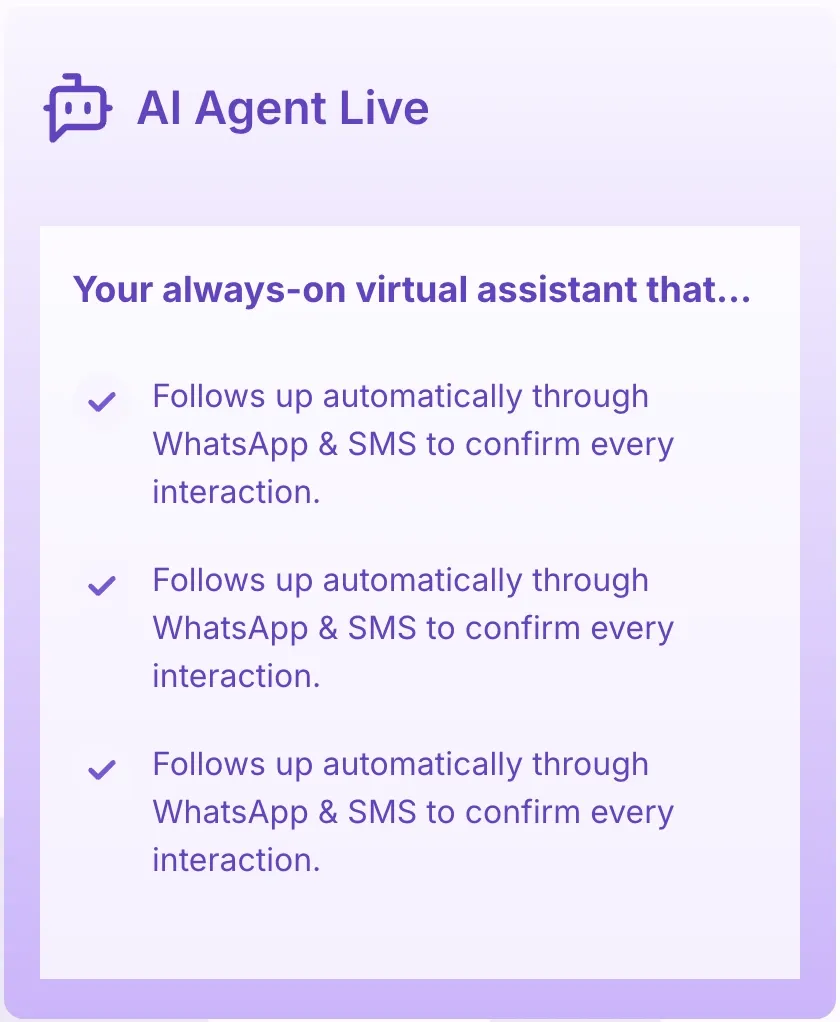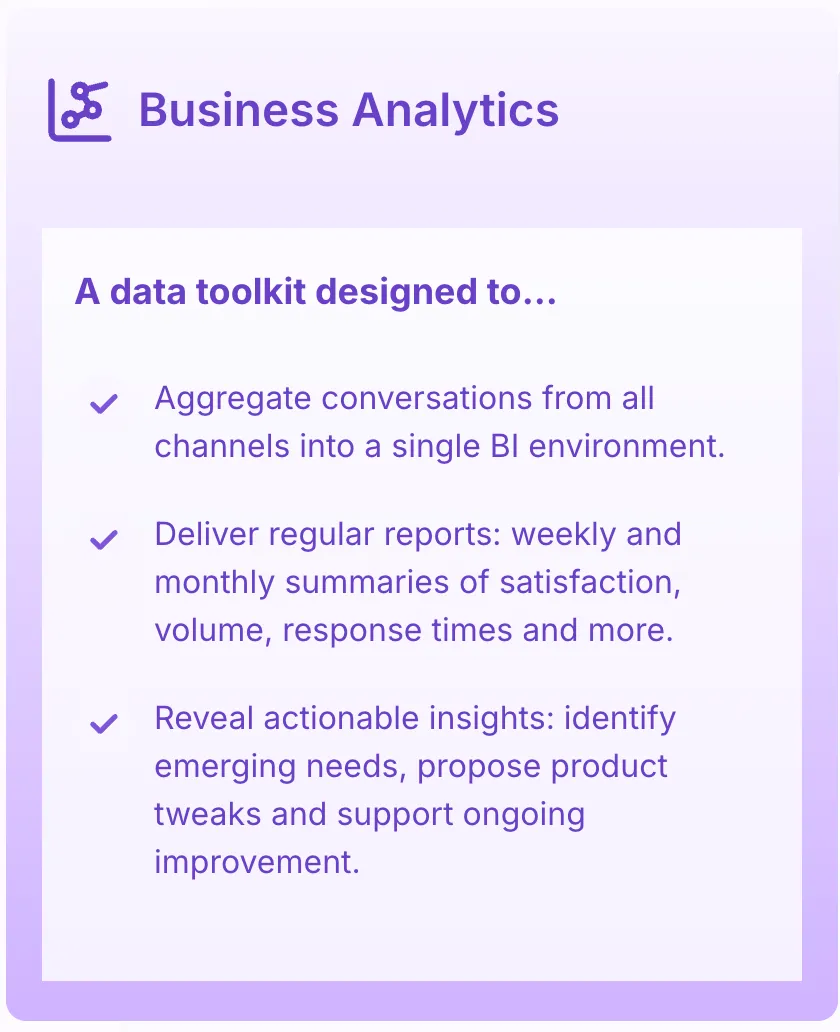How AI Solutions Are Changing Onboarding
The rise of AI solutions has changed the traditional onboarding process. These intelligent systems can:
- Predict user behavior patterns
- Deliver personalized welcome messages
- Provide real-time assistance
- Automate routine tasks
- Analyze customer interaction data
The Power of Templates in Onboarding
Templates are powerful tools that help create structured and repeatable onboarding experiences. You'll find these pre-designed frameworks particularly valuable for:
- Welcome email sequences
- Product setup guides
- Training documentation
- Progress tracking sheets
- Customer feedback forms
The Role of Automation in Onboarding
Automation makes the onboarding journey smooth and effortless. By implementing automated processes, you can:
- Reduce manual workload by 60%
- Ensure consistent communication
- Scale onboarding operations efficiently
- Track customer progress automatically
- Identify potential issues early
The Shift Towards Digital Onboarding
The digital transformation of onboarding aligns with modern customer preferences - 6 out of 10 customers now prefer digital onboarding experiences. This shift requires businesses to adapt their strategies, embracing technological solutions while still maintaining the human touch that fosters lasting relationships.
Customer Onboarding Best Practices
Creating a successful onboarding experience requires a mix of creative strategies, personalized approaches, and AI-powered solutions. Here's what industry leaders are doing to improve their customer onboarding:
1. Personalized Welcome Sequences
- Tailored messaging based on user demographics
- Custom product recommendations aligned with specific needs
- Individualized milestone tracking
- Adaptive learning paths that adjust to user progress
2. Interactive Product Discovery
- Guided tours highlighting relevant features
- Hands-on tutorials with real-time feedback
- Progress-based achievements and rewards
- Interactive checklists for key setup tasks
3. AI-Powered Assistance
- 24/7 chatbot support for instant help
- Predictive analytics to anticipate user needs
- Smart content recommendations
- Automated troubleshooting suggestions
4. Data-Driven Personalization
- Behavior analysis to customize the experience
- Usage pattern recognition
- Preference-based interface adjustments
- Dynamic content delivery
5. Microlearning Approach
- Bite-sized information delivery
- Progressive feature introduction
- Quick-win opportunities
- Skill-building exercises
6. Proactive Engagement
- AI-triggered check-ins at critical points
- Automated progress tracking
- Smart reminders for incomplete tasks
- Contextual help suggestions
These practices create an onboarding experience that adapts to each user's needs. Companies using these strategies report higher engagement rates and faster value realization for their customers.
The secret is finding the right balance between automation and human interaction. While AI takes care of routine tasks and data analysis, human support is always there for complex problems and building relationships. This combined approach allows for growth without losing the personal touch that fosters long-lasting customer connections.

Understanding the Customer Onboarding Process
A successful customer onboarding process follows a structured framework designed to guide users from initial contact to product mastery. Here's a detailed breakdown of the essential steps:
1. Welcome and Introduction
- Automated welcome email with login credentials
- Personalized greeting from account manager
- Clear outline of upcoming onboarding steps
2. Initial Setup and Configuration
- Account customization options
- Integration with existing tools
- Basic feature activation
3. Product Familiarization
- Interactive tutorials highlighting core features
- Step-by-step guides for common tasks
- Video demonstrations of advanced functionalities
Structured Tasks: Building User Confidence
The implementation of structured tasks creates a clear path for users to follow:
- Quick Wins: Small, achievable tasks that demonstrate immediate value
- Milestone Tracking: Progress indicators showing completed steps
- Customized Checklists: Task lists tailored to user roles and needs
Interactive Product Walkthroughs
Product walkthroughs serve as virtual guides, enhancing user engagement through:
- Contextual HelpTool tips appearing at relevant moments
- In-app guidance for complex features
- Interactive elements highlighting key functionalities
- Progressive LearningBasic features introduced first
- Advanced capabilities revealed gradually
- Skill-building exercises integrated into daily tasks
- Engagement MechanicsAchievement badges for completed tutorials
- Progress tracking visualization
- Interactive quizzes to reinforce learning
The combination of structured tasks and interactive walkthroughs creates a learning environment where users can develop proficiency at their own pace while maintaining engagement with the product.
The Impact of Onboarding on Customer Retention
A well-executed onboarding experience creates the foundation for lasting customer relationships. Research shows that 86% of customers stay loyal to businesses that invest in effective onboarding programs.
Strong onboarding strategies directly influence customer retention through:
- Trust Building: Personalized welcome sequences and guided product tours demonstrate your commitment to customer success
- Value Recognition: Early wins and milestone celebrations help customers see tangible benefits quickly
- Reduced Friction: Clear documentation and proactive support remove barriers to product adoption
- Engagement Acceleration: Interactive tutorials and structured tasks drive faster product mastery
Companies with robust onboarding processes experience significantly lower churn rates. Data from Zendesk reveals that 8 out of 10 customers switch to competitors after poor onboarding experiences.
Your onboarding strategy impacts key satisfaction metrics:
- Customer Lifetime Value (CLV)
- Higher product adoption rates
- Increased feature utilization
- Greater willingness to upgrade
- Net Promoter Score (NPS)
- Stronger brand advocacy
- More referrals
- Positive word-of-mouth
- Customer Satisfaction (CSAT)
- Fewer support tickets
- Quicker issue resolution
- Enhanced product understanding
The data shows a direct correlation between onboarding quality and customer retention. Companies implementing AI-driven onboarding solutions report:
- 25% reduction in customer churn
- 60% faster product adoption
- 40% increase in user engagement
- 35% higher customer satisfaction scores
These metrics demonstrate how strategic onboarding transforms new users into long-term advocates. By investing in personalized experiences and automated guidance, you create a foundation for sustained customer relationships and reduced churn rates.

Avoiding Pitfalls in Customer Onboarding: Common Mistakes to Watch Out For
A successful onboarding process requires careful attention to detail and awareness of potential pitfalls. Here are critical mistakes you need to avoid:
1. Rushing Implementation
- Skipping essential steps to speed up the process
- Not allowing customers sufficient time to absorb information
- Pushing for quick completion over proper understanding
2. Operational Overemphasis
- Focusing too heavily on technical aspects
- Neglecting the human element of customer relationships
- Missing opportunities for meaningful engagement
3. Disorganized Communication
- Inconsistent touchpoints with customers
- Lack of clear documentation and guidelines
- Random or poorly timed follow-ups
4. Common Behavioral Mistakes
- Dominating conversations instead of listening
- Ignoring early wins and small victories
- Developing a "hero complex" - trying to solve everything at once
5. Misaligned Expectations
- Equating customer happiness with satisfaction
- Attempting to save unsuitable customer relationships
- Treating customer departure as a complete failure
To prevent these pitfalls, create a structured onboarding plan with clear milestones, maintain open communication channels, and regularly collect customer feedback. Monitor customer engagement signals and adjust your approach based on their specific needs and responses.
Learning from Successful Onboarding Strategies: Case Studies of Industry Leaders
Duolingo is a great example of outstanding customer onboarding in the language learning space. The app's success comes from its ability to create an engaging, seamless experience right from the start.
Here's what makes Duolingo's onboarding strategy especially effective:
- Immediate Immersion: Users start learning their chosen language within seconds of opening the app - no complex registration required
- Progressive Complexity: Lessons begin with basic concepts and gradually increase in difficulty, preventing user overwhelm
- Gamification Elements: Streak counters, experience points, achievement badges, level progression
The results of Duolingo's strategic onboarding approach speak for themselves:
- 500+ million downloads
- 42 million monthly active users
- 83% user retention rate in the first week
Key Success Factors:
- Minimal Friction: Users can start learning immediately without creating an account
- Clear Progress Indicators: Visual representation of advancement through skill trees
- Instant Gratification: Quick wins through bite-sized lessons
- Personalized Learning Path: Adaptive difficulty based on user performance
Duolingo's onboarding success shows how reducing barriers to entry while keeping users engaged through gamification creates a powerful experience that leads to long-term retention.
Leveraging Automation for Seamless Customer Onboarding Experiences
Automated welcome emails serve as your digital handshake with new customers. These messages set the stage for successful customer relationships by delivering personalized, timely communications right when customers are most engaged.
Here's what makes automated welcome emails powerful for customer onboarding:
- Instant Engagement: Send personalized greetings within minutes of sign-up, showing customers you value their business
- Clear Next Steps: Guide users through initial setup with actionable instructions and direct links
- Resource Access: Provide immediate access to helpful documentation, tutorials, and support channels
- Personalization Options: Tailor content based on user preferences, industry, or specific product interests
AI-powered automation takes welcome emails to the next level:
- Dynamic content adjustment based on user behavior
- Smart scheduling to hit optimal delivery times
- Automated follow-ups triggered by specific actions
- Personalized product recommendations
Modern automation platforms like Yellow.ai integrate Natural Language Processing to create human-like interactions in welcome messages. These systems analyze customer responses and adjust communication styles accordingly, creating a more natural conversation flow.
Your automated welcome sequence can include:
- Initial welcome and account confirmation
- Product setup instructions
- First-win milestone celebrations
- Check-in messages at key usage points

Measuring Success in Customer Onboarding: Key Metrics to Track for Continuous Improvement
Tracking the right metrics helps you gauge the effectiveness of your customer onboarding strategy and identify areas for enhancement. Here are the essential metrics you need to monitor:
1. CSAT (Customer Satisfaction) Scores
- Send targeted surveys after key onboarding milestones
- Track satisfaction levels throughout different stages
- Identify pain points in your onboarding process
- Collect valuable feedback for improvements
2. Product Usage Metrics
- Time to first value
- Feature adoption rates
- Daily/weekly active users
- User engagement levels
3. Customer Health Indicators
- Support ticket volume
- Response times
- Resolution rates
- Self-service success rates
4. Business Impact Metrics
- Customer retention rates
- Time to revenue
- Expansion revenue
- Customer lifetime value
You can combine these metrics to create a comprehensive dashboard for your onboarding success. Set benchmarks for each metric and regularly review performance against these targets. A data-driven approach helps you make informed decisions about your onboarding strategy.
Remember to segment your metrics by customer type, industry, or product line to gain deeper insights into specific user groups' needs and behaviors. This granular analysis enables you to tailor your onboarding process for different customer segments.
FAQs (Frequently Asked Questions)
Why is customer onboarding important for businesses ?
Customer onboarding is crucial for businesses as it sets the foundation for long-term customer loyalty, reduces churn rates, and enhances overall customer retention and satisfaction by providing a structured and engaging introduction to products or services.
How can AI solutions enhance the customer onboarding process ?
AI solutions can optimize efficiency and effectiveness in onboarding by automating repetitive tasks, personalizing experiences based on customer data, and providing interactive product walkthroughs that improve user understanding and engagement.
What are some best practices for creating personalized onboarding experiences ?
Best practices include leveraging AI-driven processes to tailor content to individual needs, using templates to streamline tasks while maintaining customization, and incorporating interactive elements such as product walkthroughs to engage customers effectively during the onboarding phase.
What common mistakes should organizations avoid during customer onboarding ?
Organizations should avoid pitfalls like neglecting personalization, failing to automate repetitive tasks, not providing clear and structured onboarding steps, and overlooking the importance of measuring success through metrics such as CSAT scores.
How does automation contribute to seamless customer onboarding experiences ?
Automation, such as sending automated welcome emails, helps set a positive tone from the start, streamlines communication, reduces manual workload, and ensures timely delivery of essential information throughout the onboarding journey.
What key metrics should be tracked to measure the success of customer onboarding ?
Tracking Customer Satisfaction (CSAT) scores is vital for evaluating the effectiveness of onboarding initiatives. Other important metrics include churn rates, customer engagement levels during onboarding steps, and retention rates post-onboarding.













Member discussion